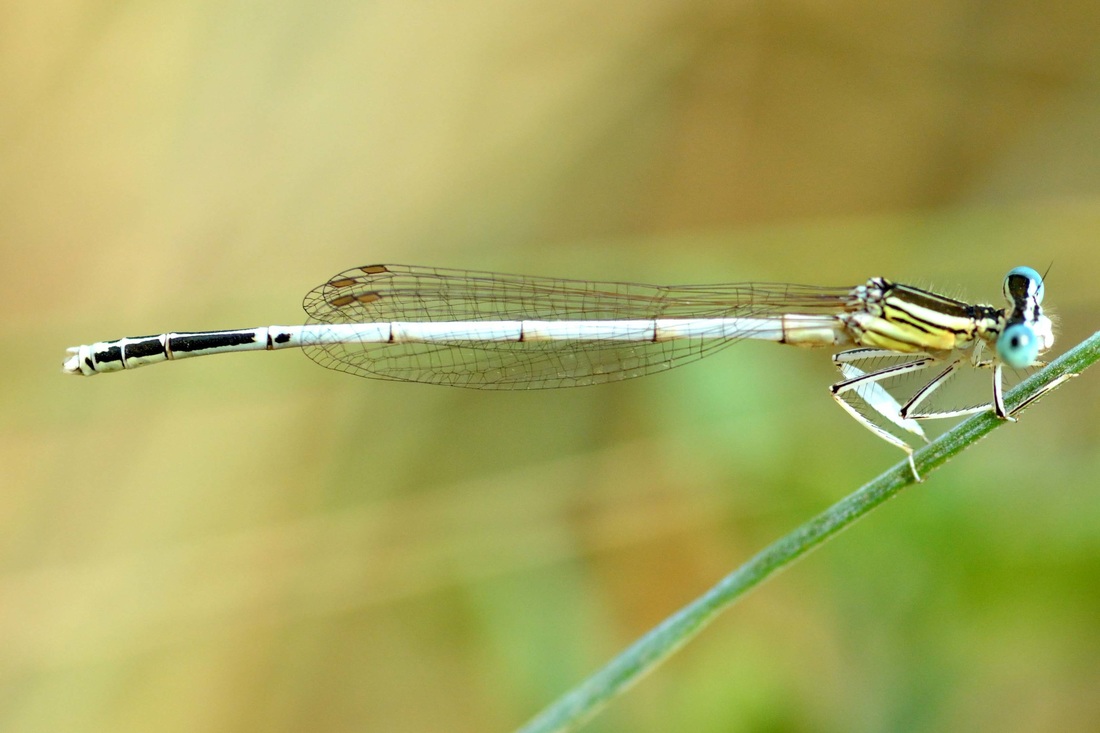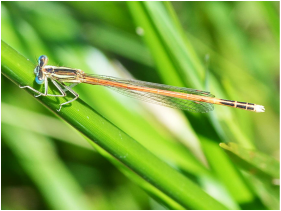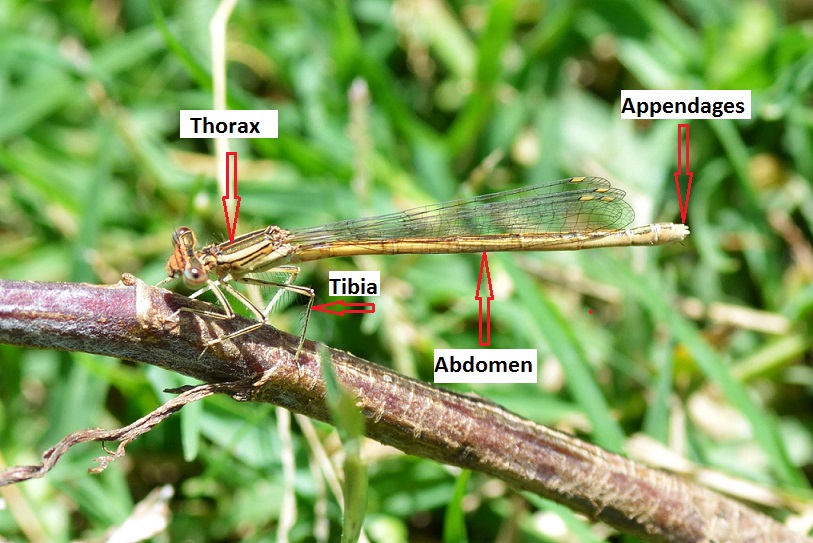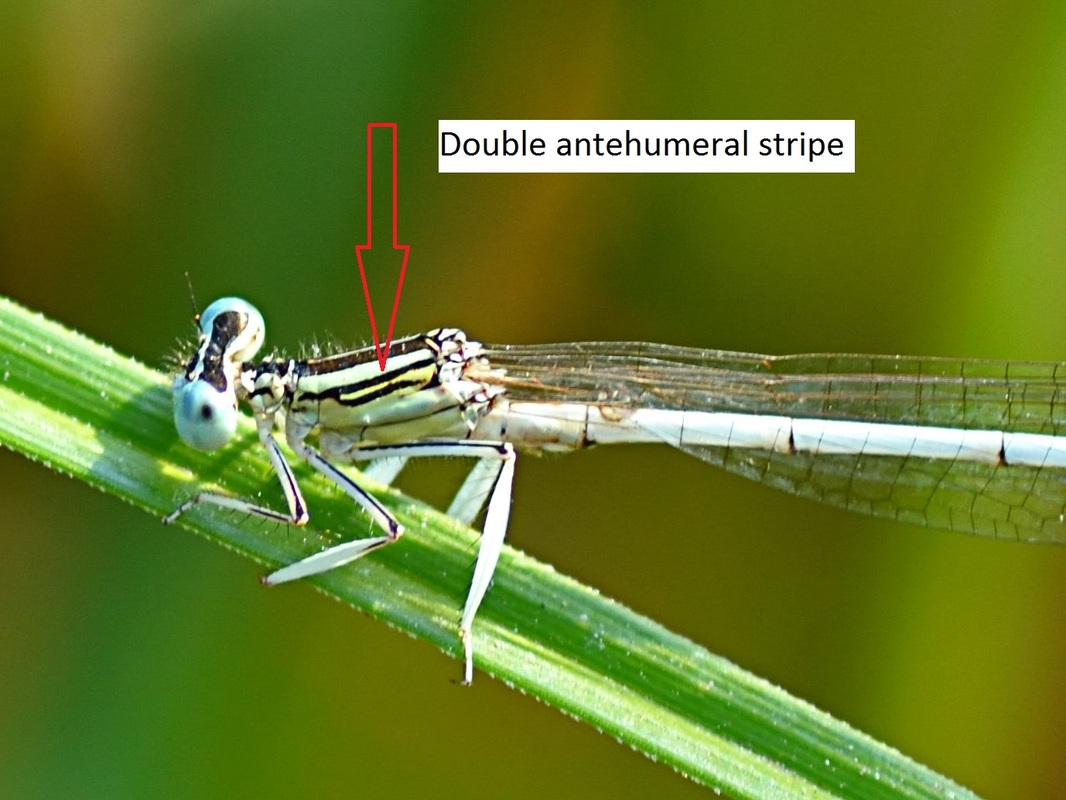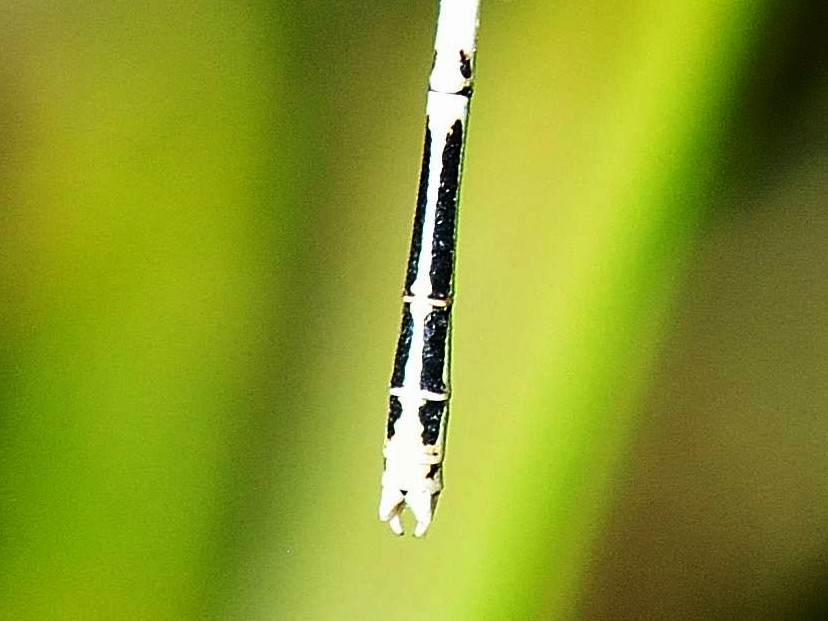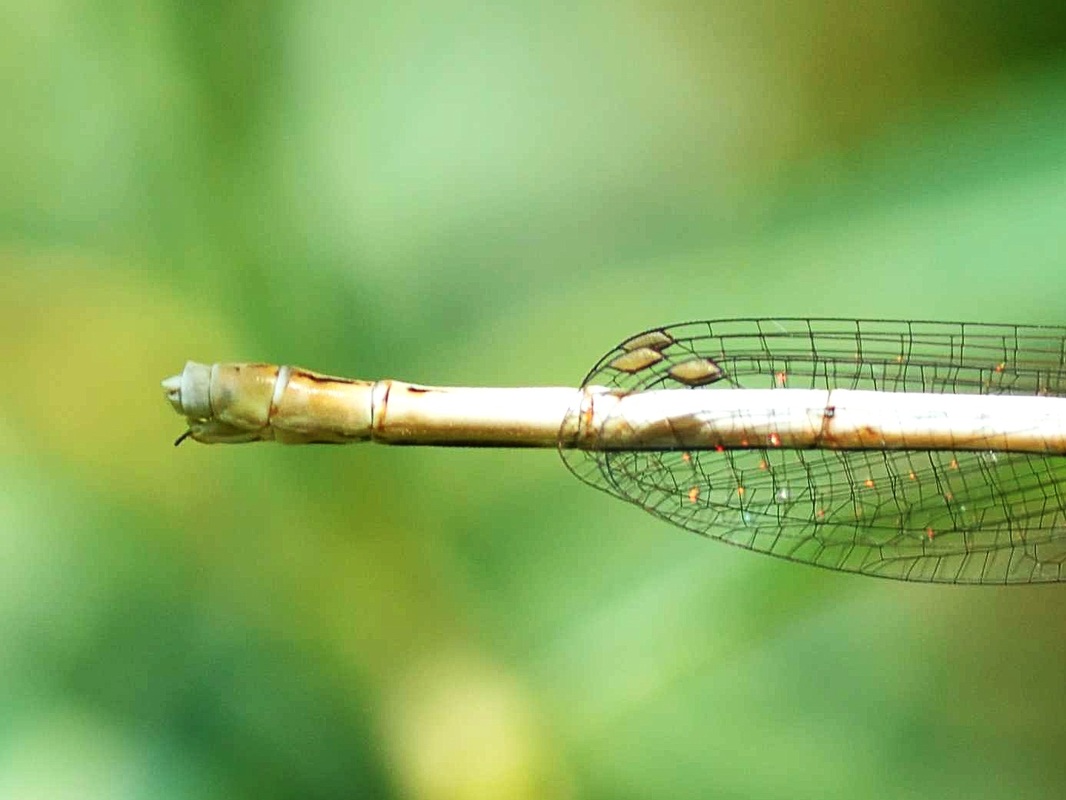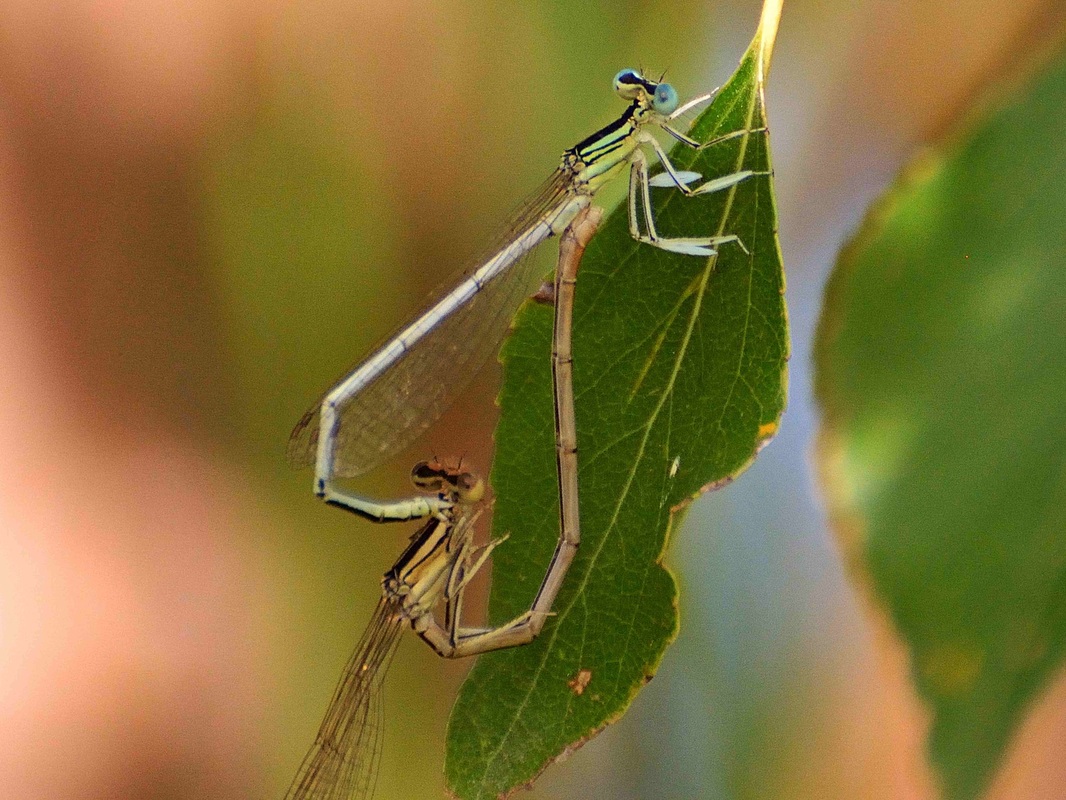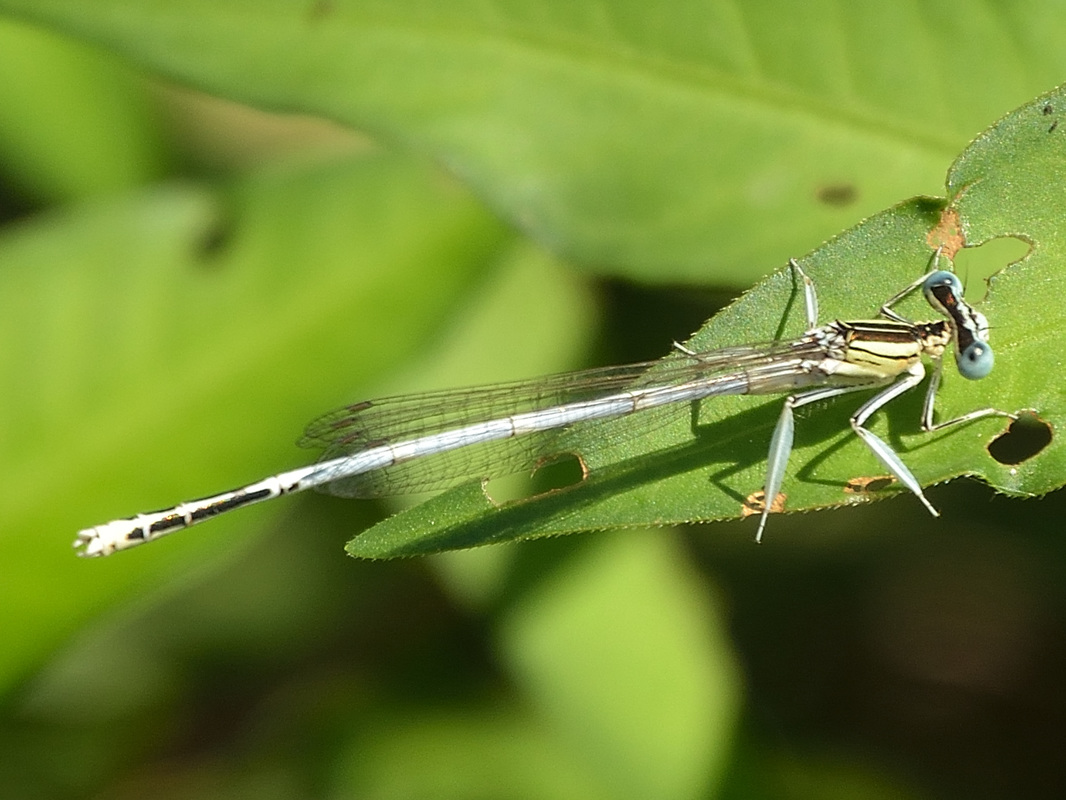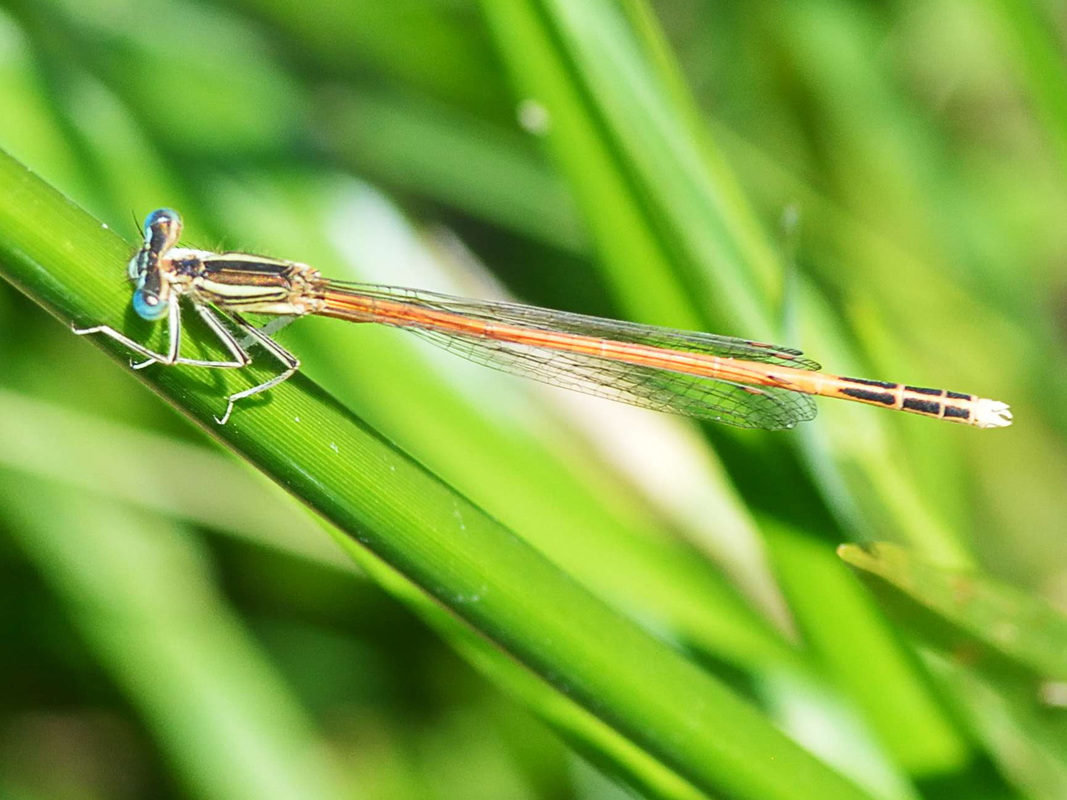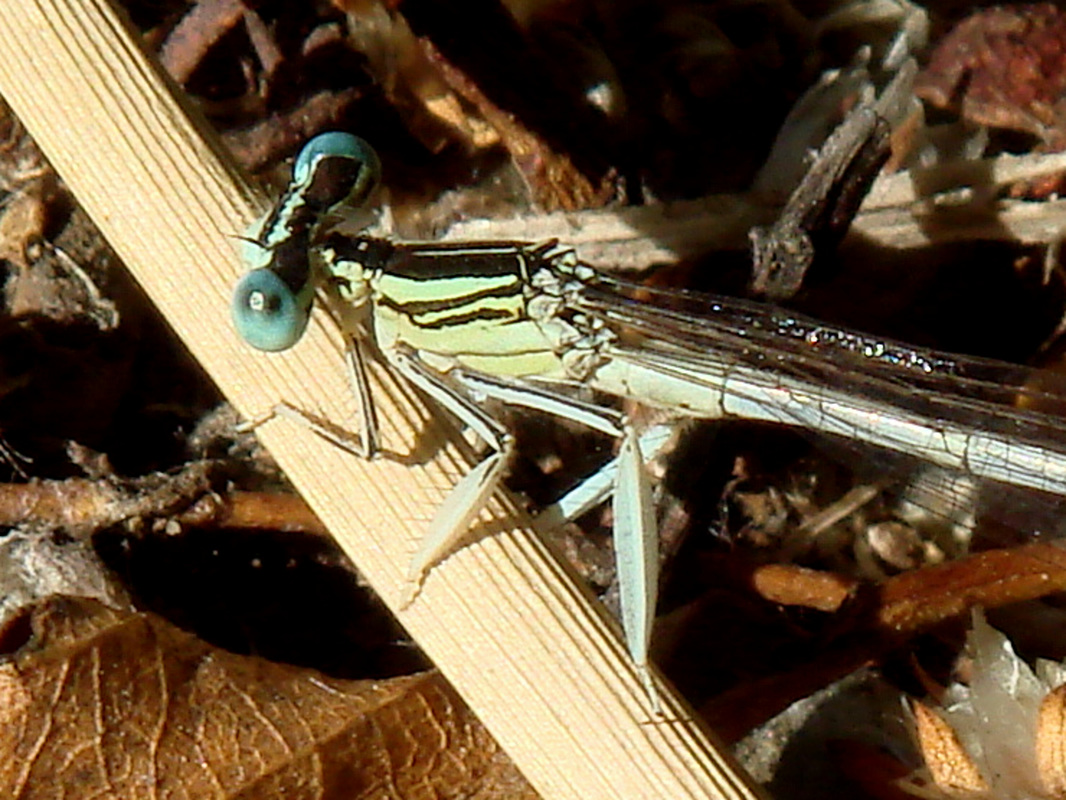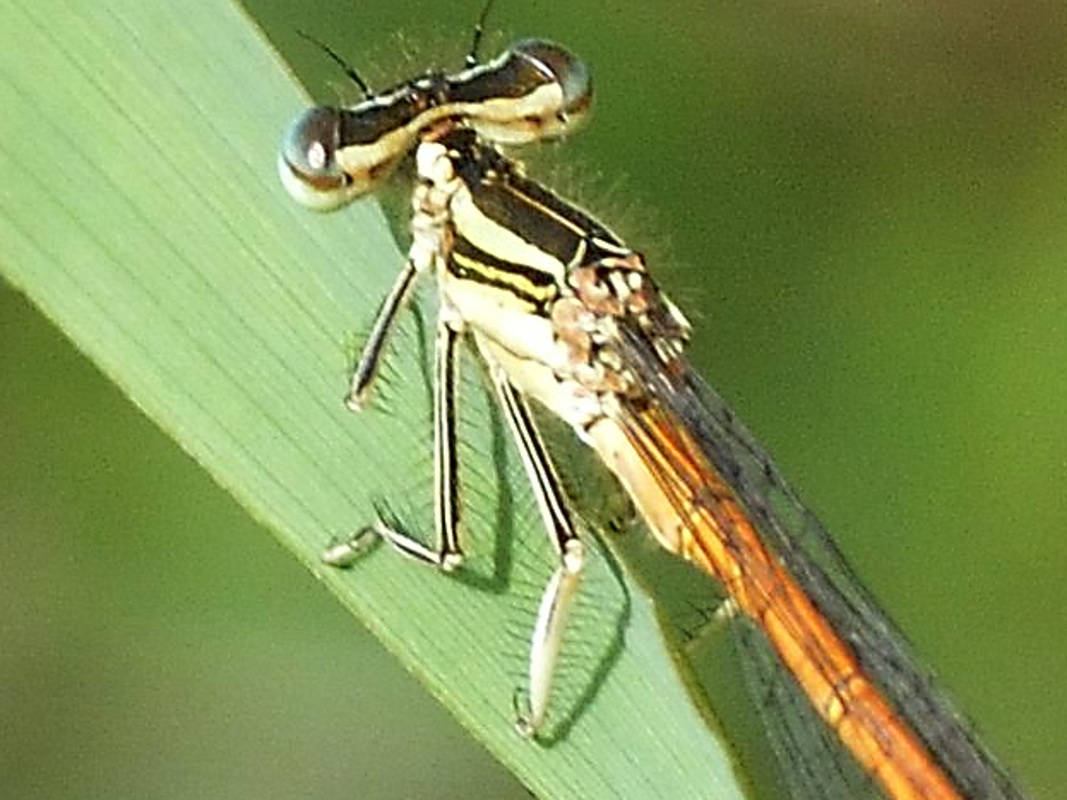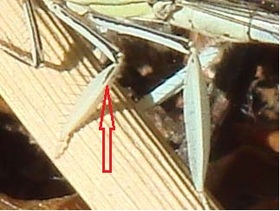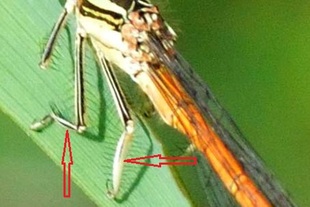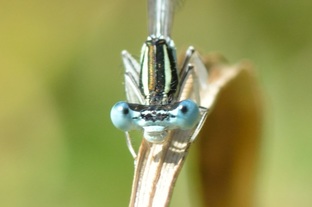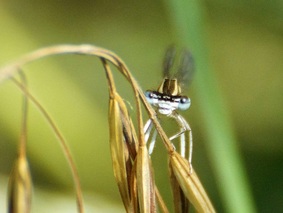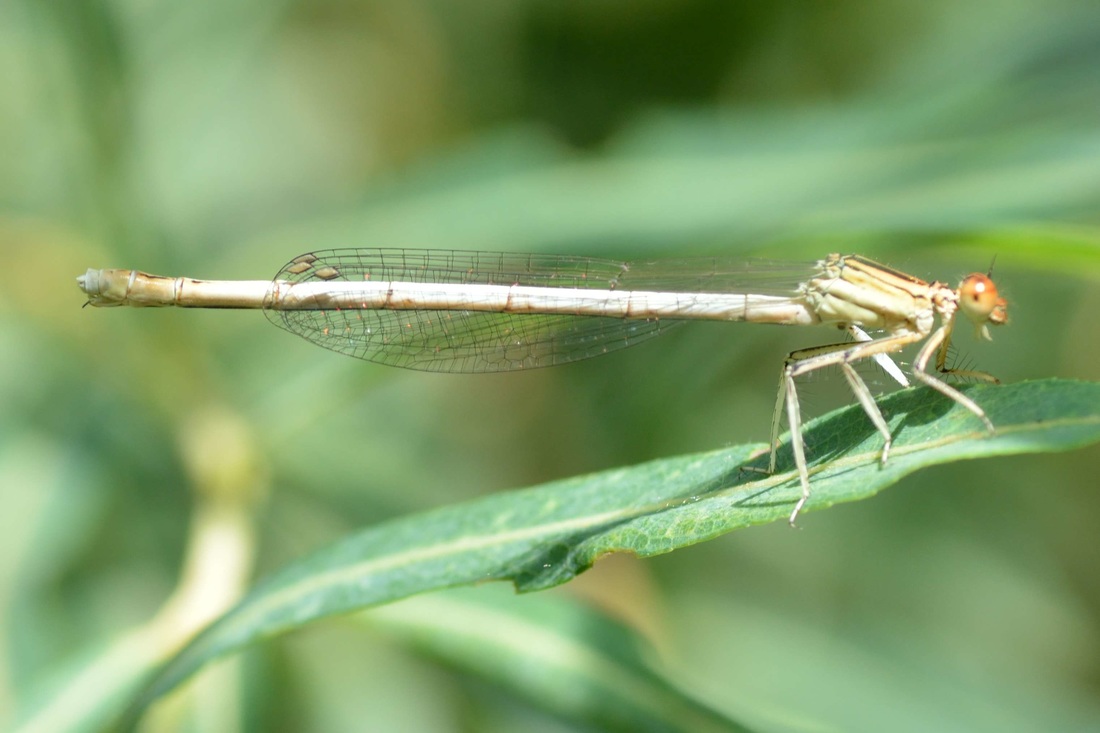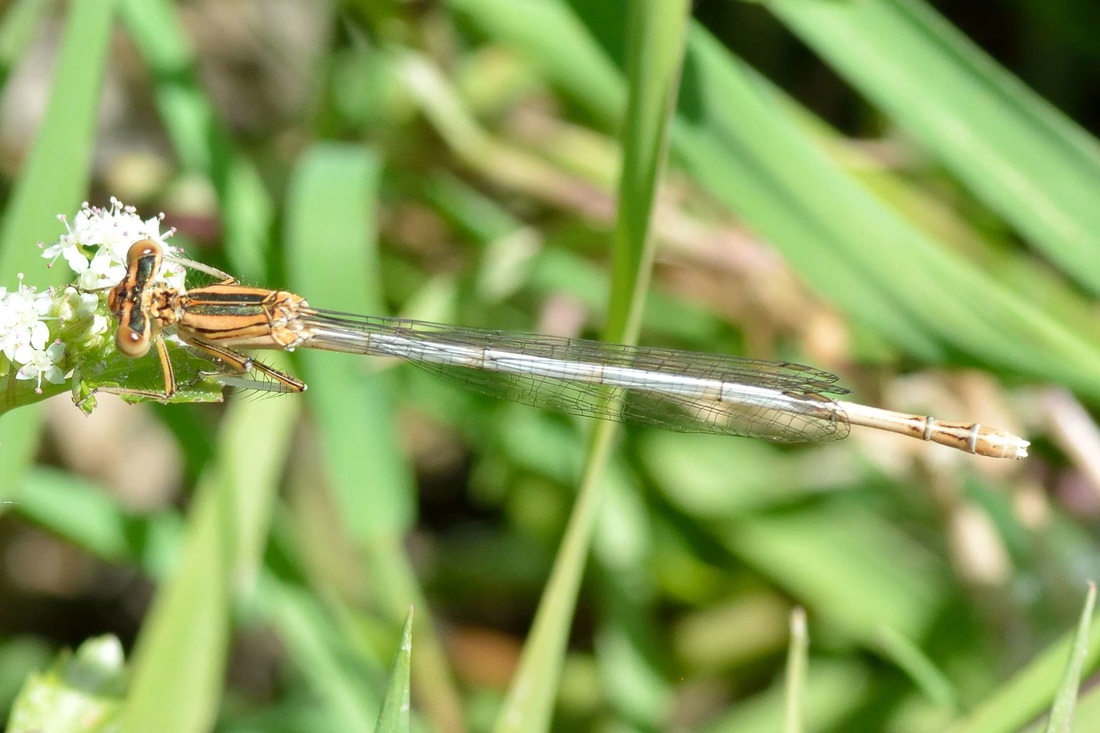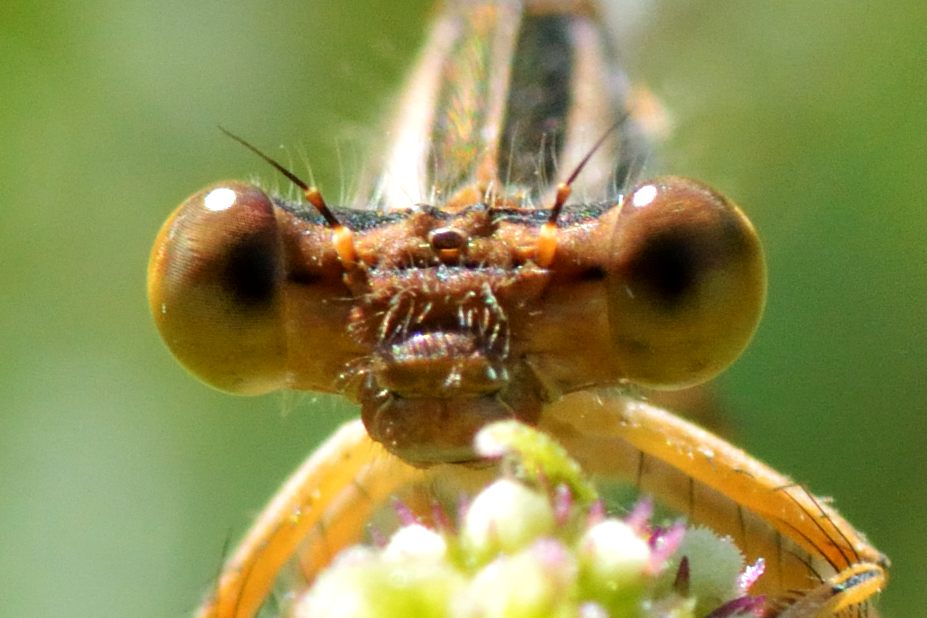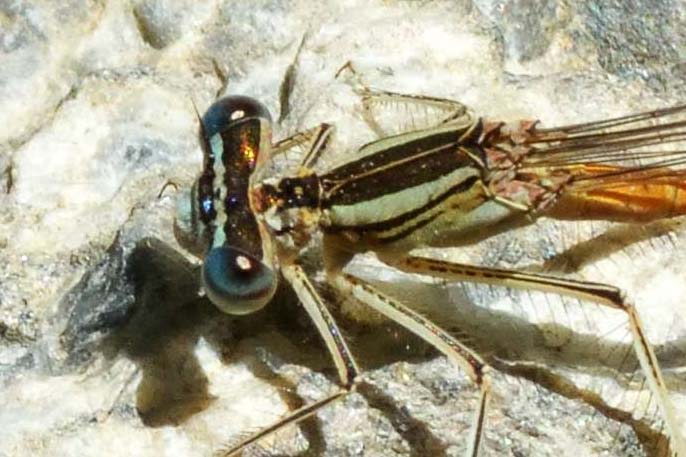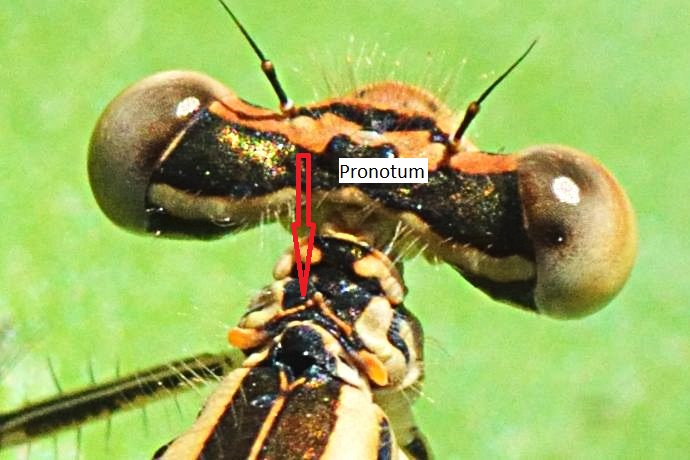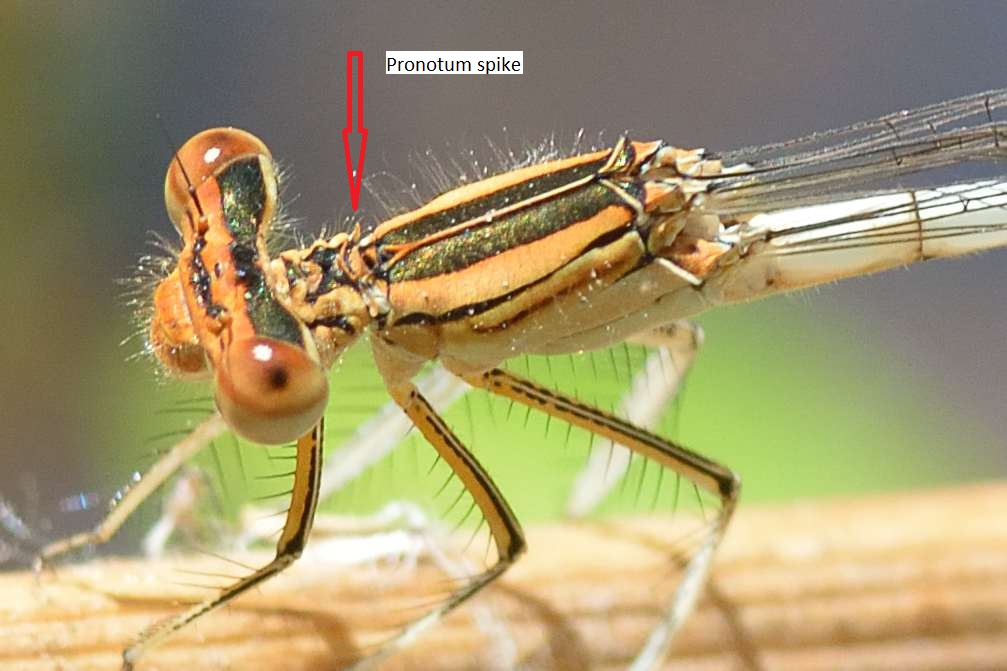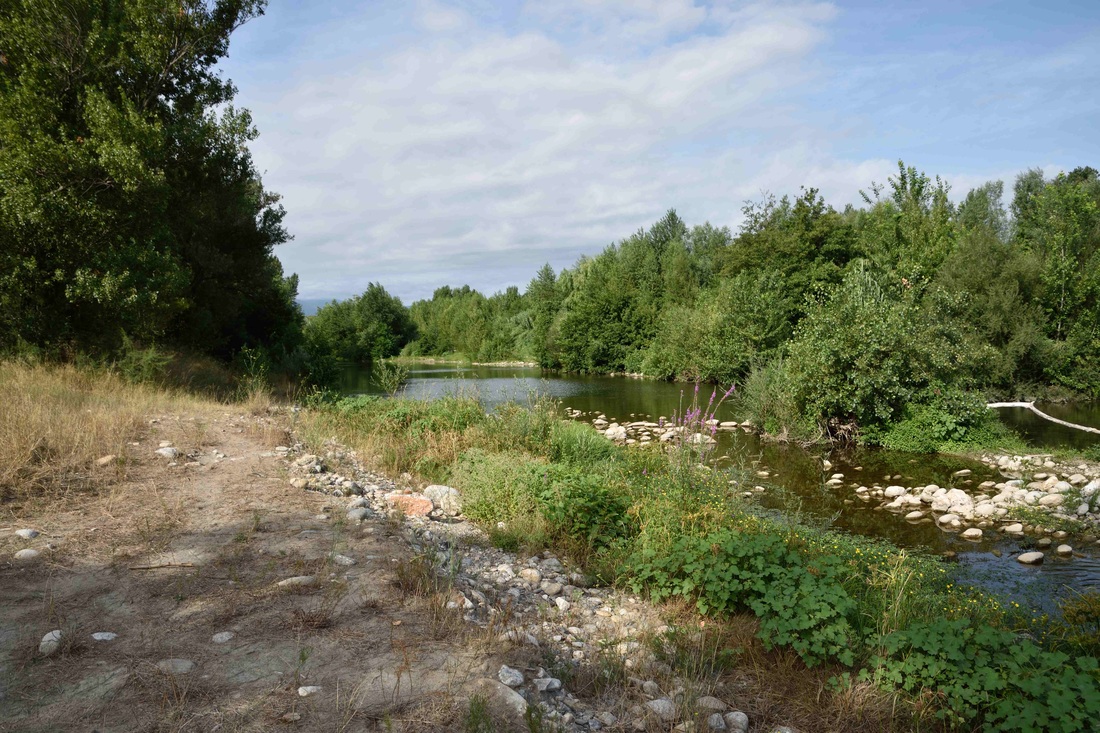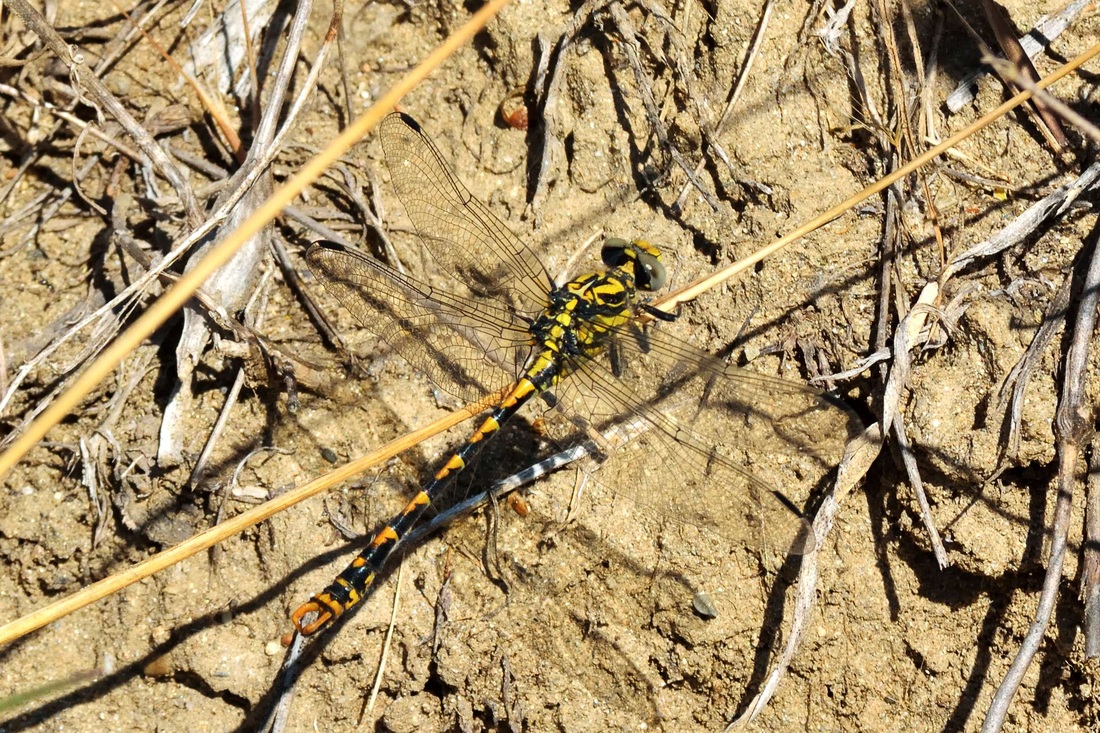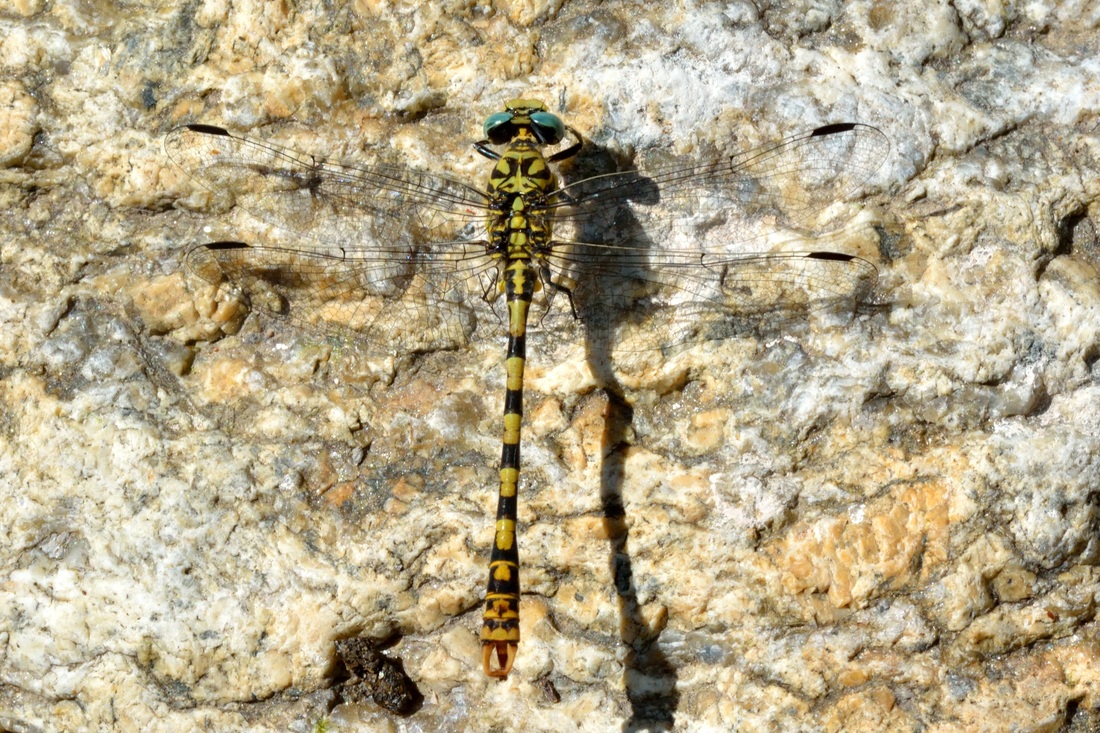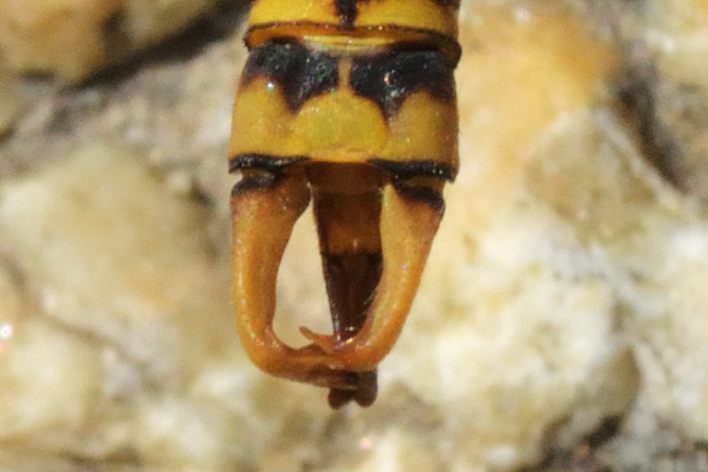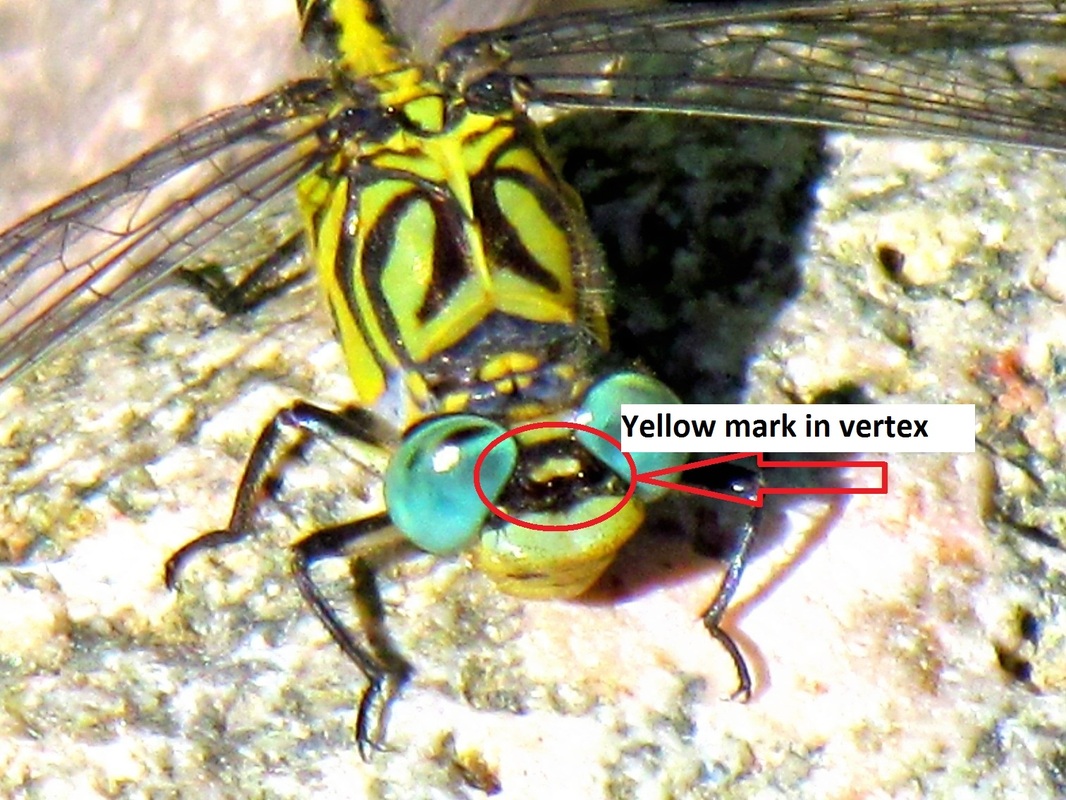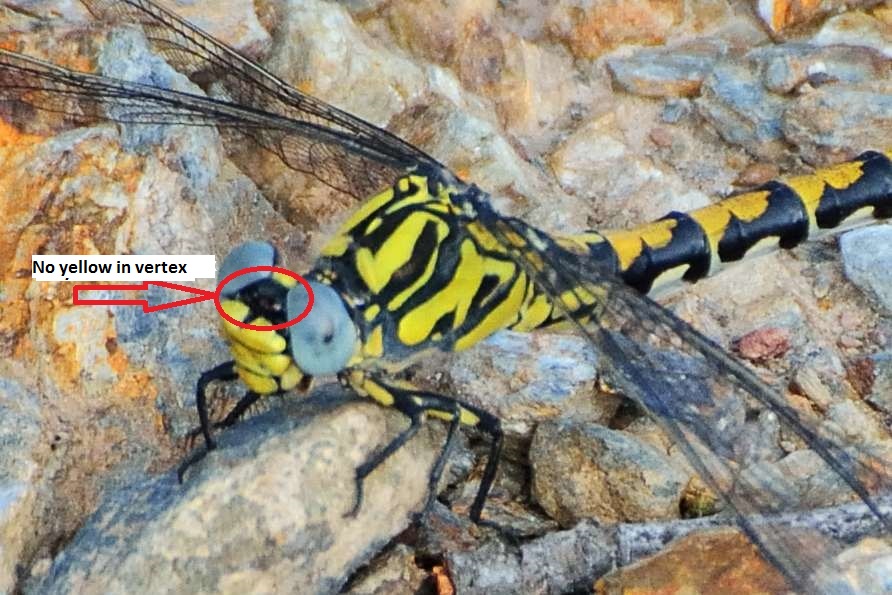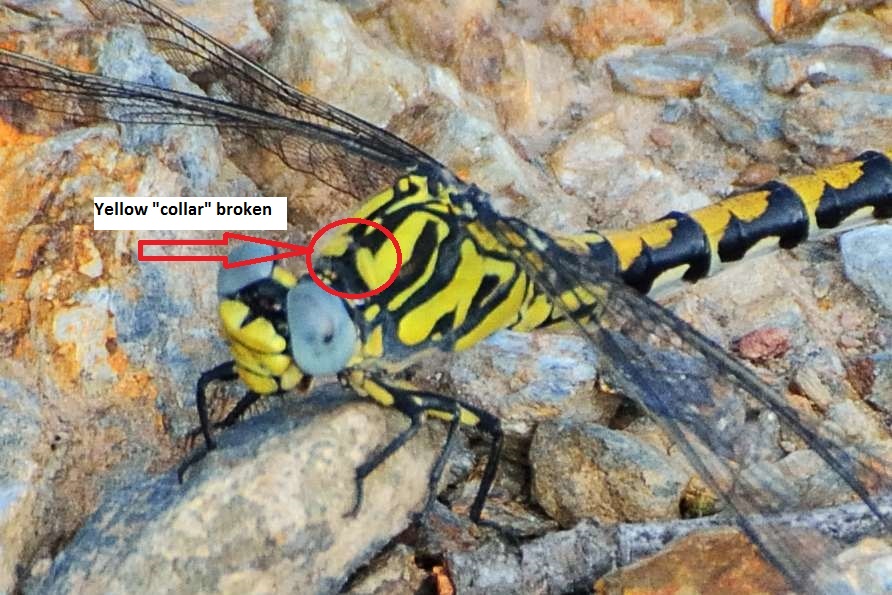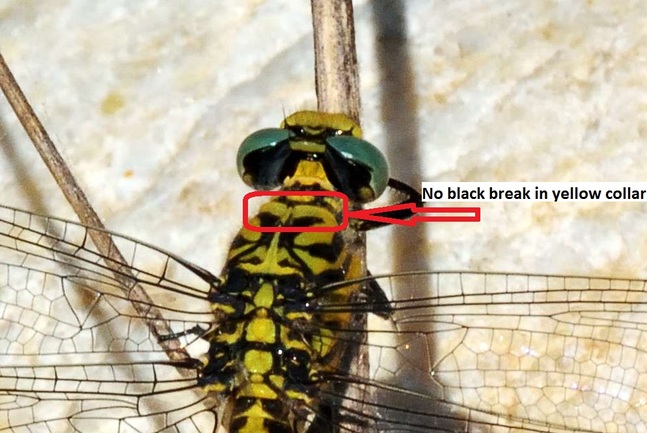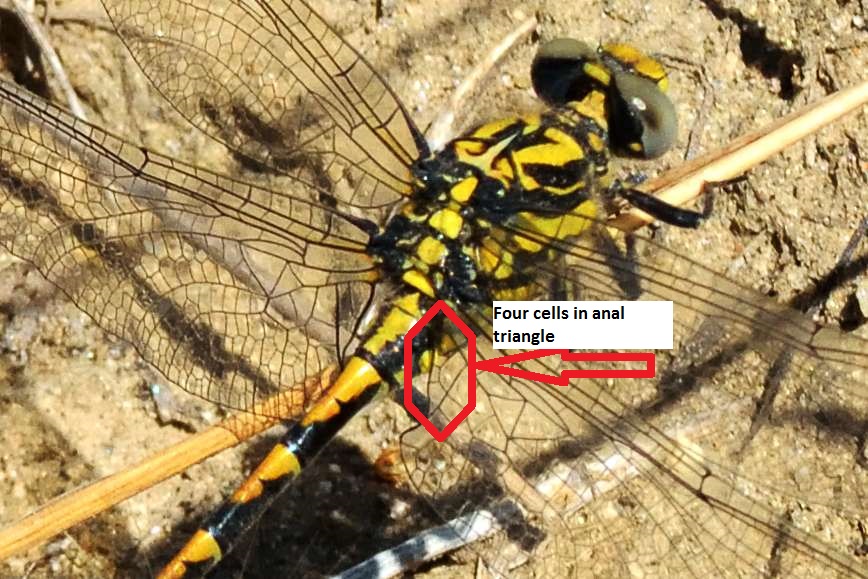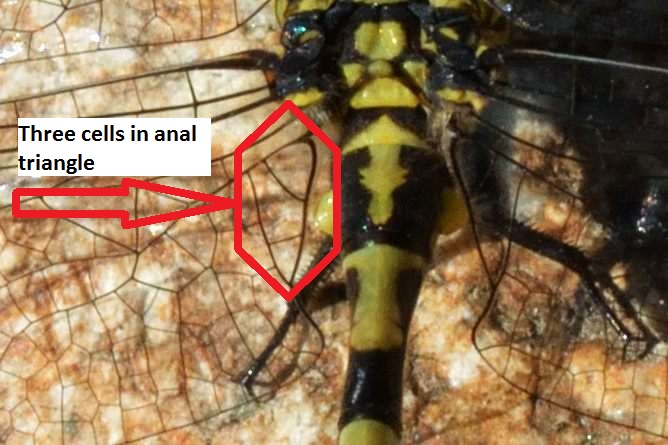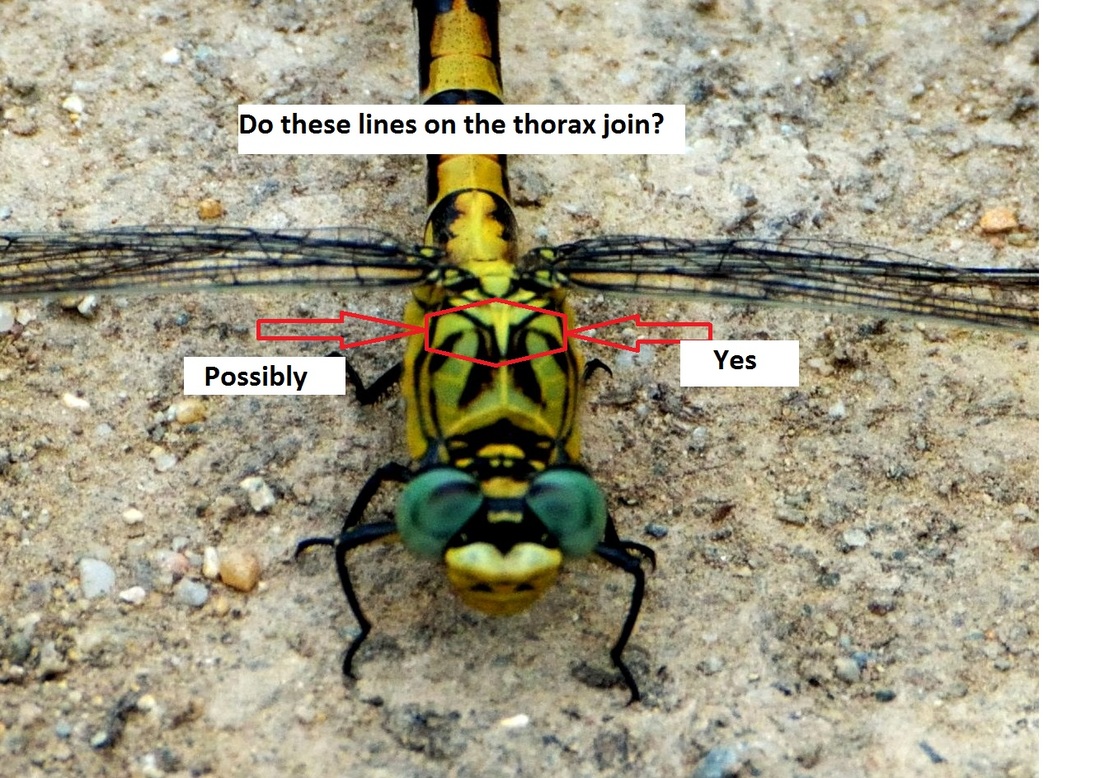Dragonflies (the order Odonata) have two suborders - dragonfly (anisoptera meaning unequal wings) and damselfly (zygoptera meaning equal wings).
- dragonflies (anisoptera) are larger and very much more obvious when you see them flying around.
- damselflies (zygoptera) are normally quite small, and if you are not looking out for them you can easily walk right by without seeing them at all.
Having talked in an earlier blog about differences in one dragonfly species, Pincertails, I am going to cover a genus of damselfly which has 3 species in France: the Featherleg.
Damselflies are dainty insects. Featherlegs measure about 30 - 35 millimetres long overall, and their abdomen is only just over 1 mm thick. So certain parts of the body from which positive identifications can sometimes be made are very small - indeed some of the details on the pronotum (see further on) measure about one tenth of a millimetre across. In itself this presents useful photographic challenges (particularly as in getting my photos I never disturb the insect any more than possible, and never catch them).
The Featherleg (Platycnemis) forms in France are
- White (P.latipes/L'Agrion blanchâtre)
- Blue (P.pennipes/L'Agrion à larges pattes)
- Orange (P. acutipennis/L'Agrion orangé)
Until recently I had thought that all three species were resident in our area, and I was having a lot of difficulty in determining which was which in my photo library, especially some of the females. I then looked more closely at a map in "Les Libellules de France, Belgique et Luxembourg" by Daniel Grand and Jean-Pierre Boudot - and life became easier. For some reason (unknown), in this South Eastern corner of France, the Blue featherleg is absent from Pyrénées-Orientales and rare in Aude. Thus the Orange and White forms are almost certainly the only ones I have been seeing. (At the same time one has to be aware that there just might be individual vagrants of the Blue form flying in from neighbouring areas).
So here are the 2 species this blog is about -
Before going any further, lets look at some of the basic parts of a damselfly's anatomy.
The Latin word Platycnemis comes from the Greek "platos" meaning flat and "cnernis" meaning shin. The tibia of the hind leg is wide and flat, more so in the case of the White Featherleg than the Orange, and all the legs have hairy bristles giving a somewhat feathery appearance.
Featherlegs often have a double stripe running along the side of the thorax - the antehumeral stripe. While this feature is diagnostic of a featherleg, it is not always present.
Male Featherlegs
The typical male White featherleg has a white abdomen, often looking porcelain-like or translucent, whereas its Orange counterpart has an orange body. They both have blue eyes and there are black markings on the last few segments of the abdomen, although the extent of these is variable.
The females are harder to tell apart. Although the typical Orange female often has a darker coloured abdomen, this is not always so as the colour probably darkens as the insect get older. Immature females of both species are very similar.
The eyes of both featherlegs are variable, some having blue patches and others being brownish for instance; the colours can look as though they are in layers. Here are a couple of examples.
The most certain way of separating a female White featherleg from an Orange is by carefully examining the pronotum. This is not easy and one has either to be very close indeed or have a detailed photo.
This picture shows the pronotum of a female White featherleg. It is shaped like an inverted "V" on top of the thorax where the front legs join. In this case the colour is light brown, but it can vary and is sometimes black.
Compare this with the pronotum of an Orange featherleg where, instead of small bumps, there are large spikes (technically "sublateral spines"). This feature may not be very obvious as the distance across the body from spike to spike is only about 1mm; this added to the relative shyness of Orange featherlegs makes the getting of detailed pictures quite difficult.
Featherlegs like slowly running water such as some reaches of the River Tech, although I have seen them on canals.
They are often approachable, especially the Whites which almost seem to enjoy being on camera!
Both the featherleg types in this blog are found in southern France, the Orange occupying south of a line from roughly the Cherbourg peninsula to Monaco, and the White south of a line from Bordeaux to Monaco.
In this blog I am referring only to featherlegs I have photographed on the banks of the river Tech near Montesquieu-des-Albères. In other areas of France they may have slightly different characteristics and may be easier (or harder) to identify.
There is little better than sitting in the shade on a river bank on a sunny day watching the fascinating behaviour of these tiny insects.
